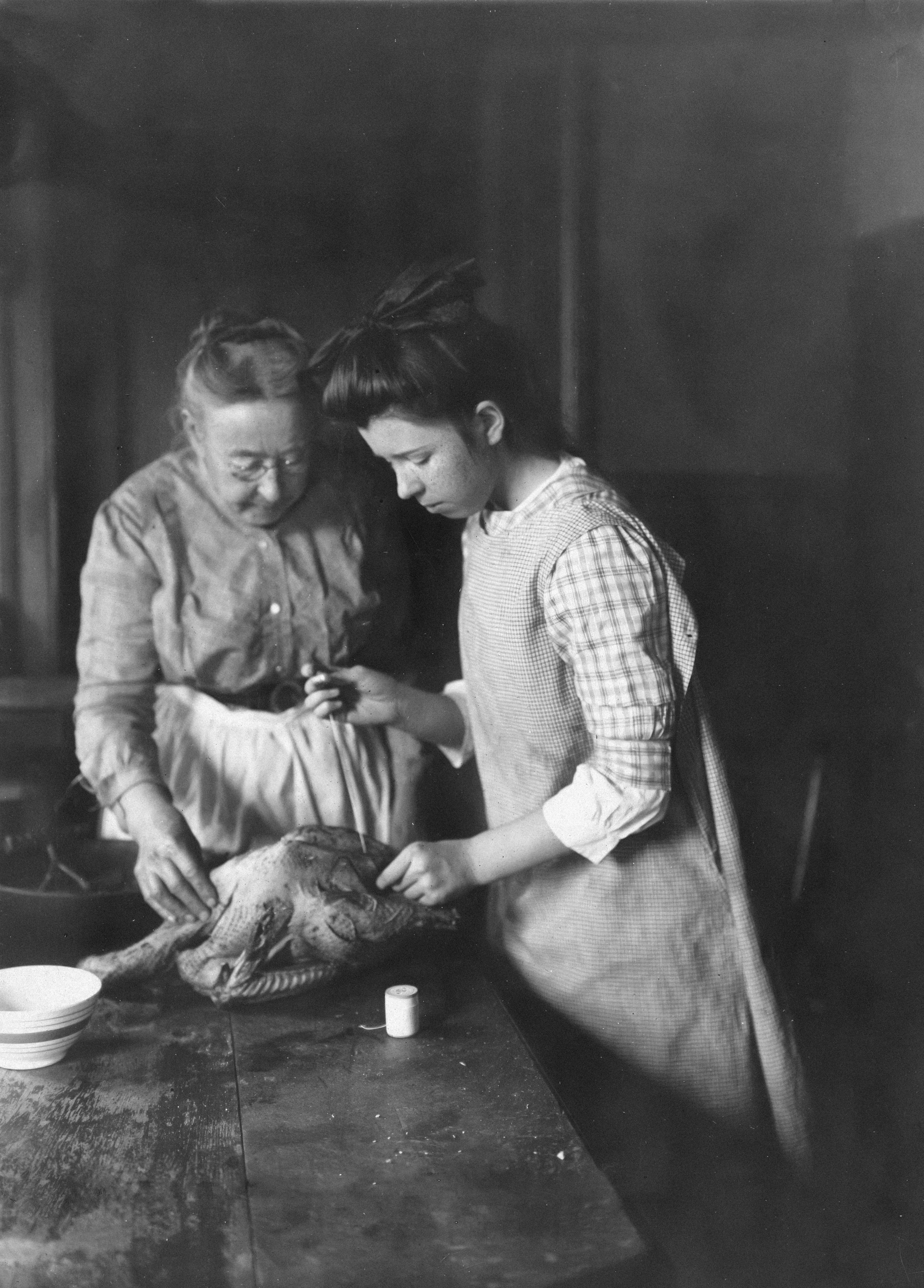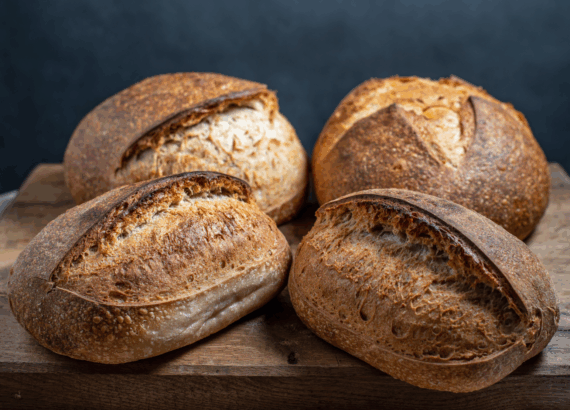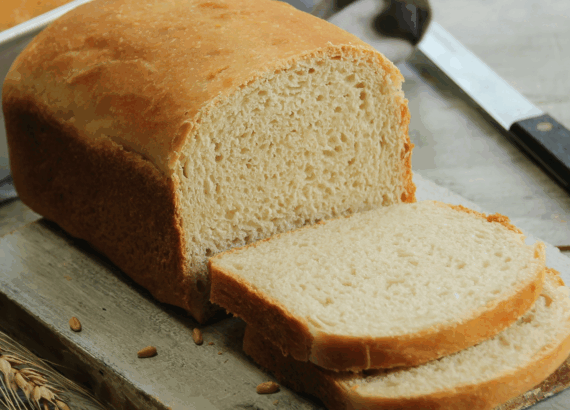The Great Depression Diet: How American Mothers Fed Hope Through Hard Times
AmericanMom Team |
America has seen some pretty hard times. And even today, our economy is forcing many to cut back and prioritize. There’s a lot to be learned from history. For example: when the world went without, American mothers didn’t stop cooking.
During the Great Depression, pantries were bare, money was scarce, and grocery stores weren’t what they are today. American moms still put food on the table. Families ate together every night. There were no pre-packaged foods, delivery apps, or takeout. And there had been, they would have gone without. Those resilient moms, families, and communities depended on grit, creativity, and God’s provision—and a Victory Garden or two.
The ultimate point is: they got down to brass tacks, pooled their resources and made the most of what they had. Their meals, no matter how scrappy, helped them make it through hard times.
The Great Depression
Though the Great Depression eventually swept across the world, it began here at home—where American mothers learned to make something from almost nothing. It was in their kitchens that a generation’s resilience was baked, boiled, and stretched thin but never broken.
Nothing was guaranteed in those years, but women across America built a cuisine out of scarcity and self-sufficiency. They stretched ingredients, reused scraps, and turned simple food into something sacred. We might call it stewardship or even sacrifice, but they called it survival.
If you’ve ever had the chance to talk to or know someone who lived through those hard years, then you probably saw how frugal they were. Nothing was wasted; plates were cleaned, clothing was patched, and household items were repaired. It scarred them, but they learned a lot about preservation and gratitude.
We have a thing or two to learn as well.

Making Do and Making It Work
The Depression diet wasn’t glamorous, but it was honest. Every bite was made to last, every scrap repurposed. A pot of beans simmered all day, feeding a family for pennies. Yesterday’s bread became tomorrow’s pudding. Potato water thickened soups. Bacon grease seasoned everything.
It wasn’t about dieting as we know that word today. Instead, it was about preserving dignity and getting to the next minute, day, and month with a little meat on your bones. The mothers of the Great Depression didn’t measure success in calories or macros; they measured it in full bellies and the peace of knowing they could make it another day. They tightened their belts as a service to their children, husbands, and neighbors, not to fit in to fashion fads or look like celebrities.
Back to the Basics
When shelves were empty, women went back to the basics. They asked themselves what could be grown, what could be stored, what could be stretched. Families planted precursors to the victory garden, raised chickens, canned fruits, and saved every bone for broth. Two ingredient meals were a reality, not just a fun name for a cookbook. Our great-grandmas didn’t panic because their child wouldn’t have Doritos with their lunch, they turned to the nutritious essentials, and went back to the basics, the staples that had fed mankind for thousands of years.
And here’s the beautiful part: those humble meals built a strong nation. Kids who grew up on beans, cornbread, and oatmeal became soldiers, farmers, and builders who would later serve their country, feed the world, and erect skyscrapers.
Those hard times made strong men.

Depression-Era Staples That Made It Through Hard Times
Shelves may have been bare, but there were pantry staples that carried families through the hardest years—and will again today.
1. Potatoes
Who doesn’t love a potato? These relatively inexpensive, filling, and versatile essentials can be used for soups, stews, and hash. They can be cubed or wedged for the oven, cut thin for the air fryer, peeled and mashed, or kept whole to be baked. It seems there are a thousand ways to eat a potato and every single one is filling and satisfying. An added bonus is that any potato water from boiling or soaking can be used to thicken sauces or even used in bread!
2. Beans
When meat is scarce, the bean is the next best thing. Protein-rich and shelf-stable beans are almost as versatile as the potato. Bake them, toss them into bean soup, add them to chili, mash them or roast them, but don’t ever underestimate them! One tip to carry over from the Great Depression is to stretch them by cooking them in a big pot once a week. Repurpose those cooked beans throughout the week in various recipes.
3. Cabbage
Perhaps the hardest sell for children and adults alike, you can’t deny the budget-friendly nature of cabbage. Cheap, hearty, and long-lasting in a root cellar. Cabbage can be made into soup, fried with onions, stuffed into noodle casings for veggie wontons, dumplings, or potstickers, or made into a poor man’s casserole.
4. Oats
Oats are a breakfast staple and baking extender. This simple grain can make baked oatmeal for a crowd, pancakes, meatloaf, cookies, granola bars, and so much more. Plus, it’s easy to buy oats in bulk, cutting down on the cost even more.
5. Flour & Cornmeal
These foundational ingredients are a must for your pantry. With these two you can make filler sides that make it easier to do without meat and vegetables. Use your flour and cornmeal for breads, biscuits, cornbread, dumplings, fried cornmeal mush, Johnny cakes, pancakes, pasta, breading for chicken or fish, or as thickeners in soups.
6. Onions & Carrots
Onions and carrots are lifesavers. They give flavor and fill out soups and stews when meat is scarce. Carrots also make great snacks, are easy to grow, and have numerous health benefits. Onions can be used in stocks, chopped into ground beef or turkey to make it go further, added to sandwiches, and more. They are also fairly easy to grow yourself and somewhat inexpensive.
7. Lard, Bacon Grease, and Drippings
Save and reuse everything! Nothing went to waste during the Depression and grease was no exception. Collect every drop to use for frying, flavoring greens, potatoes, biscuits, cooking oil, pan grease, sauces, and so much more. Lard, bacon grease, and drippings have built-in flavor and lots of fat that will fill you up and keep that meat on your bones.
8. Milk Powder or Evaporated Milk
Fresh milk is always best, but can be expensive. If you don’t have a local dairy, or even if you do, stock up on milk powder and evaporated milk in case of emergency. Both of these can be used in coffee, soups, sauces, and desserts when fresh milk is too costly. The same nutrients, just slightly different delivery.
9. Eggs
During the Depression, backyard chickens were common and eggs became protein powerhouses for pennies. You can feed a decent number of people on scrambled eggs and eggs can also be used as rising agents in baked goods, fillers for soups, and as snacks when hard boiled. Eggs might be expensive today, but if you look around and befriend someone who has chickens you might be able to get a deal, or even free eggs. Even better is if you’re able to get your own chickens! They eat scraps and provide eggs and meat.
10. Rice & Pasta
These are both bulk staples that turn into hearty dishes like rice pudding, “Hoover stew,” or tomato macaroni. They are great at filling bellies and helping things like meat and sauce go a little further. Rice is fairly inexpensive, and pasta can be made at home with just flour and eggs.
What We Can Learn Today
As millions of families once again face economic uncertainty, maybe it’s time to revisit the wisdom of those kitchen warriors who turned to the basics for survival. The American moms of the Great Depression remind us that homemade doesn’t mean poor, it means resourceful. Nourishment isn’t just what’s on the plate, it’s in the spirit with which food, no matter how meager, is served.
The Depression Diet wasn’t about deprivation so much as it was about gratitude and self-sufficiency. It was a mindset of waste nothing, want less, give thanks, and share when you can.
Our great-grandmothers didn’t just survive hard times, they fed their communities and families hope when the world was starving for it.
So, perhaps this is our morsel of hope for all of you. You are absolutely capable of feeding your family. Times may be hard, the dollar and broth may need to stretch an extra mile, but your self-sufficiency, scrappy inventiveness, and willingness to return to the basics will see you through these hard times.






